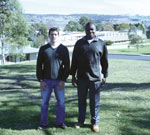A project aimed at identifying the differences between key feed ingredients, with regards to their potential to induce or inhibit reflux, has been undertaken at the University of New England (UNE).
Four experiments were conducted to evaluate the occurrence and possible effects of certain dietary ingredients on reverse movement of feed matter (reflux) in broiler and layer chickens.
The results suggest that reflux appears to be a part of normal gut motility as well as a possible adaptive response to an absence of food.
Dietary ingredients are very likely to affect reflux, especially ingredients that increase the viscosity of the digesta in the gut.
In addition, microbial populations may also be relocated by reflux, with serious implications for bird health.
The implications of reflux on nutrient utilisation and bird health were also examined.
This could enable the development of new varieties of crops and feed additives capable of regulating reflux in order to achieve optimal dietary utilisation and bird health.
In birds, as with mammals, food matter progresses from the mouth to the cloaca (anus), during which useful nutrients are extracted.
Some reverse movement has been observed in large birds, including the turkey, the implications of which are unknown.
This project was conducted to examine if such reverse motion occurs in chickens and what this may imply for their growth and health.
Some results were presented at the recent Poultry Science Symposium by the Project Leader, UNE’s Paul Iji.
To aid the application of this research, the student who worked on the project, Adam Sacranie, has secured a scholarship to continue with his PhD at UNE, along with a top-up scholarship from the CRC to investigate the effects of different dietary factors on the incidence of digesta reflux.
“The results have serious implications for nutrition science as we know it today,” Paul explains.
“If nutrients do reflux, then markers, commonly used in measuring nutrient digestibility, would also reflux.
“This is one area that Adam will examine during his PhD.”
Contact Chris Day to order a copy of the Final Report.


